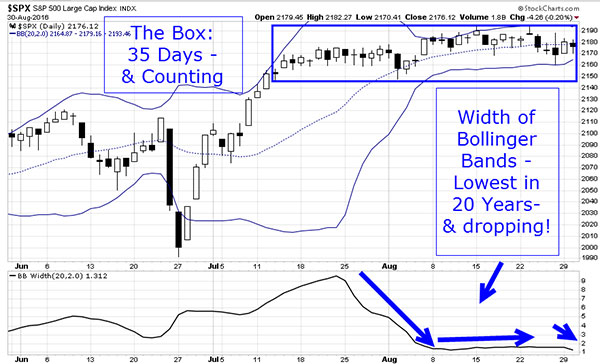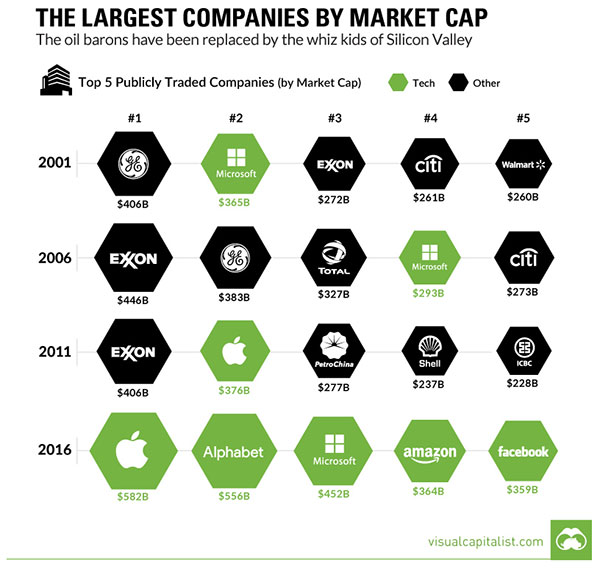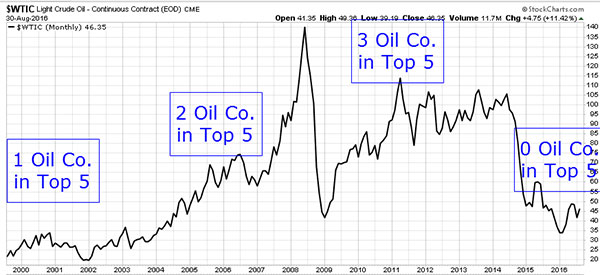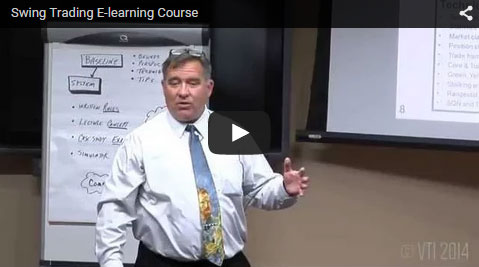Tharp's Thoughts Weekly Newsletter
-
Feature Article: Determine Your Time Frame For Trading by Van K. Tharp, Ph.D.
-
Workshops: Oneness Awakening in September is last Oneness workshop till 2017
-
Trading Tip: What Top Market Caps Tell Us — Cool Chart Alert, by D. R. Barton, Jr.
-
$700 Early Enrollment Discount Expires TODAY!
Still not sure if this is the right course for you?
Watch the video below to learn a little more about what this course offers.

Learn to Trade Three Forex Trading Systems with an Edge
Join us for this three-day workshop, and leave prepared to use three different trading systems in the currency markets. Professional Forex Trader and Super Trader graduate Gabriel Grammatidis is passionate about teaching these systems that have proven to be profitable in live market trading over for several years.
Have you ever attended a trading workshop that taught a lot of methodologies, and then you found that you had trouble trading the system at home because you had so little experience with it? Gabriel has had that experience, and wants traders at his workshops to be able to trade the systems when they get back home, so he takes a slightly different approach.
Students in this course will come away with a solid understanding of the trading process because they practice the setups, entries, and exits in groups with other students in the class. Gabriel makes extensive use of a trading simulator (live history replay) with which actual trades are traded in class as if “live.” So, you leave the workshop already having a good idea on how to trade the systems.
After a thorough review of each system, he slowly walks you through a number of trades on each system that has multiple time frame charts—basically the same screen setup that Gabriel uses to identify setups, entries and exits. All of these trades use recorded historical data run on a software system that reproduces the price charts from the date and time in the live market. You will be able to watch the setups happen as he explains how to get ready for and make the entry, and then how to get ready for and make the exit. After walking the class through several simulations, Gabriel involves the students in the decision process for pattern detection, entry and exits as they acquire competence.
When you get home, you’ll already have a good sense of trading each system—which means you’ll have a running start. And just to be sure, Gabriel provides everyone with pages of additional example trades to take home and study.
You have the option to continue your training for three additional days by enrolling in Live Forex Trading!
The Forex Trading Workshop is the classroom training course, then the Simulation and Live Forex Trading Workshop is the complementary hands-on training.
The three trend-following systems that are taught in the Forex workshop will be traded in the Forex market in different timeframes. The course is an in-the-field learning experience in which students have a master coach by their side and are able to apply the trading concepts in the real world.
Gabriel is a rule-based discretionary trader — the type of trader that Dr. Tharp has found to be the most successful (click here to read the article). Discretion — according to the principles of Tharp Think — means that you use rules in a disciplined and logical manner complemented by experience and intuition. It doesn’t mean doing whatever you feel like doing at that moment.
The process is iterative and reinforces in a practical way Van Tharp's trading concepts and tools. You will see, understand and apply the Tharp Think Principles. Whether you are a trader or investor, a professional or part-time trader, the Forex markets offer the flexibility to fit your style (in whatever time zone you might be living). While one of the goals during the three-day workshop is “generating positive R-multiples”, it is seen as more important that the attendees take home a full array of “learning experiences” that make them a better trader/investor back home. These live trading days will give you the opportunity to gain “unconscious competence” — once achieved, flawless execution and consistent profitability become reality.
Learn more about Forex Trading Systems and Live Forex Trading...
Feature Article

Determine Your Time Frame For Trading
by Van K. Tharp, Ph.D.
Click here to resolve formatting problems 
How active do you want to be in the market? What is your time frame for trading? Do you want to have a very long-term outlook, probably making a change in your portfolio only once a quarter? Do you want to be a stock trader who holds positions for a year or longer? Do you want to be a long-term futures trader whose positions last one to six months? Do you want to be a swing trader who might make several trades each day with none lasting more than a few days? Or do you want the ultimate in action—being a day trader who makes 3 to 10 trades each day that are closed by the end of the day so that you have no overnight risk?
Table 4.1 shows the advantages and disadvantages of long-term trading. Long-term trading or investing is simple. It requires little time each day and has minimal psychological pressures each day — especially if you take advantage of your free time to work or spend time with your hobbies. You can typically use a fairly simple system and still make a lot of money if you adequately size your positions.
I think the primary advantage of long-term trading or investing is that you have an infinite profit opportunity (theoretically at least) on each position in the market. When you study many of the people who’have gotten rich through investments, you’ll find that in many instances wealth builds up because people have bought many stocks and just held on to them.4 One of the stocks turns out to be a gold mine — turning an investment of a few thousand dollars into millions over a 10- to 20-year period.
TABLE 4.1
The Advantages and Disadvantages of Long-Term Trading
| Advantages |
Disadvantages |
| No need to watch the market all day—you can use stops or options to protect yourself. |
You can be whipsawed by intraday market moves each day. |
| Psychological pressure of the market is lowest in this type of system. |
You can have large equity swings on a single position. |
| Transaction costs are low. |
You must be patient. |
| It only takes one or two trades to make your whole year profitable. |
It usually has a reliability (number of winning trades) of less than 50 percent. |
| You could have an expectancy (see Chapter 7) well over a dollar per dollar risked. |
Trades tend to be infrequent, so you must capitalize by trading many markets. |
| You can use a simple methodology to make a lot of money. |
It requires a lot of money to participate if you want to trade big liquid markets. |
| You theoretically have an infinite profit opportunity with each trade or investment. |
If you miss one good trading opportunity, it can turn a winning year into a losing year. |
| Costs of data and equipment are minimal. |
|
The primary disadvantage of long-term trading or investing is that you must be patient. For example, you might not get a lot of opportunities, so you must wait for them to come along. In addition, once you’re in a position, you must go through fairly extensive equity swings (although you can design something that minimizes them) and have the patience to wait them out. Another disadvantage of longer-term trading is that you generally need more money to participate. If you don’t have enough money, then you cannot adequately size your positions in a portfolio. In fact, many people lose money in the markets simply because they don’t have enough money to practice the type of trading or investing that they are doing.
Shorter-term trading (which might be anything from day trading to swing trading of one to five days) has different advantages and disadvantages. These are illustrated in Table 4.2. Read through the list and then compare it with the long-term table. Once you’ve done so, you can then decide for yourself what best fits your personality.
TABLE 4.2
The Advantages and Disadvantages of Short-Term Trading
| Advantages |
Disadvantages |
| Most day traders get many opportunities each day. |
Transaction costs are still high and can add up each day. For example, in my own active account, transaction costs for last year amounted to about 20 percent of the initial value of the account. |
| This type of trading is very exciting and stimulating. |
Excitement usually has nothing to do with making money — it’s a psychological need! |
| If you have a methodology with an expectancy of 50 cents or more per dollar risked, you may never have a losing month—or even week. |
Profits are limited by time, so you may need to have a reliability well over 50 percent to make money. However, I’ve seen some notable exceptions to this rule of thumb. |
| You don’t have overnight risk in day trading, so there is little or no margin required even in big markets. |
Data costs are very high because most short-term traders need live quotes. |
| High-probability entry systems, which most people want, work with short-term trading. |
Many high-probability entries can have losses that are bigger than the gains. |
| There’s always another opportunity to make money. |
Short-term systems are subject to the random noise of the markets. |
| Transaction costs have come down so significantly that they are no longer prohibitive. |
The short-term psychological pressures are intense. |
I once met a short-term foreign-exchange trader who made about six trades a day. No trade would last more than a day or two. However, the fascinating thing about what he was doing was that his gains and losses were about equal and he made money on 75 percent of his trades. This is a fantastic trading methodology. He had $500,000 to trade with and a $10 million credit line with a bank. When you understand position sizing, as discussed later in this book, you’ll realize that this system comes as close to the Holy Grail as anything in existence. He could easily make a hundred million each year with that system and the capital he has.5
However, that’s not the case with most short-term systems. Most of them seldom have a reliability much higher than 60 percent, and their gains are usually smaller than their losses — sometimes even leading to a negative expectancy.6 Sometimes one big loss can ruin the whole system and psychologically devastate the trader. In addition, the psychological pressures of short-term trading are intense. I’ve had people call me who say something like this:
I make money almost every day, and I haven’t had a losing week in almost two years. At least until now. Yesterday, I gave back all the profits I had made over the last two years.
Keep that in mind before you decide that short-term trading is for you. Your profits are limited. Your transaction costs are high. Most importantly, the psychological pressures could destroy you. Nevertheless, my belief is that the largest profit percentages are made by active short-term traders who really have their psychology together. I’ve seen short-term traders who could make as much as 50 percent or more per month (on small amounts of money such as a $50,000 account) when they were very in tune with the market and themselves.
Excerpted from 2nd ed 2007 McGraw Hill, Van Tharp

NOTES
- These people may have purchased a dozen low-capitalization stocks. Eleven may turn out to be worthless, while one turns into a new giant. Because the stocks were largely ignored, the owner neither gets rid of the losers before they become worthless nor finds out about the winner until it is worth a lot of money.
- Somehow fate is often cruel to people with such a great system. In this person’s case, he could not trade size. Nor was it possible for him to fix his problem psychologically because he did not believe that he had anything to do with the problem. In fact, at this point, he cannot trade at all because he’s nervous and he believes that his stomach is stopping him from trading. Thus, in my opinion, he doesn’t understand the real meaning behind a Holy Grail system — finding yourself in the market.
- One of my clients has developed a day-trading system based on gains being significantly larger than losses. His system has a reliability rate of less than 50 percent, yet it nets him tremendous rates of return. This shows that there are other ways to conceive of short-term systems.
About the Author: Trading coach, and author, Dr. Van K. Tharp is widely recognized for his best-selling books and his outstanding Peak Performance Home Study program—a highly regarded classic that is suitable for all levels of traders and investors. You can learn more about Van Tharp www.vantharp.com.
Workshops
Oneness Awakening Workshop in September

Participating in the Oneness Awakening Course
is an extraordinary opportunity to benefit from some
of the important journeys Dr. Tharp has taken
to transform his life.
This course has become a fundamental tool in
VTI's mission to help his clients succeed.
Attend to learn how you can become more aware,
positive, calm, centered, and successful.
Many years ago, after using a number of various psychological and coaching techniques, I decided that I was only going to use those that made a significant impact and had lasting changes. My experience was that only psychological techniques that included some sort of spiritual resource seemed to make this level of change possible. The concept of “spiritual resource” was independent of any particular faith. All that was important to me was that the technique allowed you to join with some spiritual resources. Once I discovered the Oneness Awakening material I knew this was the significant breakthrough material I wanted to share with others.
At the Oneness Awakening Workshops, two things have caught my attention. First, the visible and incredible transformations of some of the attendees inspire me deeply. Second, it really allows me to see how willing people are to stretch themselves out of their self-defined box and really examine the conscious and subconscious beliefs that run their lives. For this reason, I use this workshop, in addition to the Peak Performance 101 workshop, to assess people who are interested in joining the Super Trader program. The first part of the Super Trader program is psychology work and the highest level of psychological work is that of spiritual awakening.
So while this is not a trading workshop, it has a great impact on trading because it opens a path for traders to become "one" with the market and accurately sense what the market is doing in the present moment. This allows traders to trade with more clarity and assurance.
I hope you will join me in September for this event. Priced at $495 it is a true value.
—Van K. Tharp
Learn more...
Combo Discounts available for all back-to-back workshops!
See our workshop page for details.
Trading Tip

What Top Market Caps Tell Us — Cool Chart Alert
by D. R. Barton, Jr.
Click here to resolve formatting problems
First, the markets are still in their sideways box that I highlighted in the last few weeks. This unprecedented volatility contraction will end eventually, perhaps by price grinding to the upside or perhaps by a violent, brief move to the downside. For now, however, add five more days to our already historic “lack of movement”: 
Instead of digging into more ways to show narrow volatility, this week I’ll share a really cool chart that caught my eye and then we’ll discuss the implications of said chart.
A Short History of Market Capitalization
Much like grade school kids, we’re fascinated by the extremes — the largest and the smallest things. Want to get a room full of kids talking? Have them chat about animals that are big (elephants – largest land animal, Great Dane — tallest dog, blue whale — largest animal ever).
When one thinks of market cap, usually you are trying to understand one of two extremes as well. How small a company is - is it a penny stock? At the other extreme, we may look at one of the world’s giants as in, “With the price of oil down, I wonder how much Exxon’s market cap has slipped?”
It’s little wonder that stock watchers keep their eyes on the biggest companies.
Today we’re going to take a brief walk through the largest companies by market cap. Jeff Desjardins over at visualcapitalist.com put together a truly interesting chart done so well that it explains itself: 
One clear conclusion we can draw — since the last iteration in 2011, tech has conquered all (for now). Shoot — in 2011, #5 Facebook wasn’t even a publically traded company!
Here’s another conclusion from the land of the obvious: oil company market caps are certainly influenced by the price of oil. To that latter point, let’s look at one quick chart: 
Perhaps not as cool as Desjardins’ chart — but this chart informs nonetheless. It would be interesting to see how many oil companies were in the top 5 in 2008 – 2009. With almost all other companies beaten down by the Global Financial Crisis and Great Recession, it’s safe to guess that there were more than three oil companies in the top 5. Ah — but that’s research for another day.
So What?
Some may quibble over minor points (like the fact that Amazon is much more of a retailer than a tech company), but regardless, the market cap metric is important in this way — it tells what investors value most. Desjardins’ chart above shows how institutions and retail investors have voted with their cash - and what they have voted over the last 15 years has varied. Or as they say, the times — they are a changin’.
Have you heard though that this time, things really are different? (Maybe you also heard that in a previous cycle?) As tempting as that may sound, it is hard to see how this landscape will change much in the next year or two. Beyond that, however, online technologies will start to mature, markets will become saturated and internet growth will eventually slow.
If there’s one thing we can say with any certainty, it’s this — the market cap chart will change again in time.
For all you aspiring futurists out there — please send me your thoughts on what types of companies will be on this list 5 and 10 years from now. With enough ideas, I’ll write a follow-up article and include your best ideas. When you send your note, please include your geographic location and whether I can use your last name or not.
Please send your thoughts and comments to drbarton “at” vantharp.com — I always appreciate hearing from you!
Great Trading,
D. R.
About the Author: A passion for the systematic approach to the markets and lifelong love of teaching and learning have propelled D.R. Barton, Jr. to the top of the investment and trading arena. He is a regularly featured analyst on Fox Business’ Varney & Co. TV show (catch him most Thursdays between 12:30 and 12:45), on Bloomberg Radio Taking Stock and MarketWatch’s Money Life Show. He is also a frequent guest analyst on CNBC’s Closing Bell, WTOP News Radio in Washington, D.C., and has been a guest on China Central Television — America and Canada’s Business News Network. His articles have appeared on SmartMoney.com MarketWatch.com and Financial Advisor magazine. You may contact D.R. at "drbarton" at "vantharp.com".
Free Book
FREE Book! We pay for the book, you pay for shipping.
Read Van’s Latest book —
TRADING BEYOND THE MATRIX
The Red Pill for Traders and Investors
ALL YOU HAVE TO DO IS CLICK HERE!
Eleven traders tell their stories about transforming their trading results and lives, in this 400 plus page book.
Below is a brief video on how powerful this book is to traders.

Swing Trading Systems E-Learning Course

Ken Long's systematic approach to swing trading with 5 distinct trading systems. This course has over 10 hours of instruction with significant follow-along documents included for students to download.
Review the videos as many times, and as often as you like, for one full year. Plus, you receive a bonus workshop at no extra charge—Dr. Van Tharp's Tharp Think Essentials!
You can complete this course at your own pace, from the comfort of your own home or office, and access the materials as many times as you wish during your 1-year subscription period.
Take a look at this video from Ken to learn more about this course.

We have extensive information about the Swing Trading System e-learning course, including how to purchase...click the link below!
Learn More About The Swing E-Learning Course...
Matrix Contest
 Enter the Matrix Contest Enter the Matrix Contest
for a chance to win a free workshop!
We want to hear about the one most profound insight that you got from reading Van's new book, Trading Beyond the Matrix, and how it has impacted your life. If you would like to enter, send an email to [email protected].
If you haven't purchased Trading Beyond the Matrix yet, click here.
For more information about the contest, click here.
Ask Van...
Everything we do here at the Van Tharp Institute is focused on helping you improve as a trader and investor. Consequently, we love to get your feedback, both positive and negative!
Send comments or ask Van a question by clicking here.
Also, Click here to take our quick, 6-question survey.
Back to Top
Contact Us
Email us at [email protected]
The Van Tharp Institute does not support spamming in any way, shape or form. This is a subscription based newsletter.
To change your e-mail Address, e-mail us at [email protected].
To stop your subscription, click on the "unsubscribe" link at the bottom left—hand corner of this email.
How are we doing? Give us your feedback! Click here to take our quick survey.
Call us at: 800-385-4486 * 919-466-0043 * Fax 919-466-0408
SQN® and the System Quality Number® are registered trademarks of the Van Tharp Institute and the International Institute of Trading Mastery, Inc.
Be sure to check us out on Facebook and Twitter!
 
Van Tharp Home • Products • Workshops • Back Issues • Contact • About Van Tharp • Site Map ———————
Back to Top |